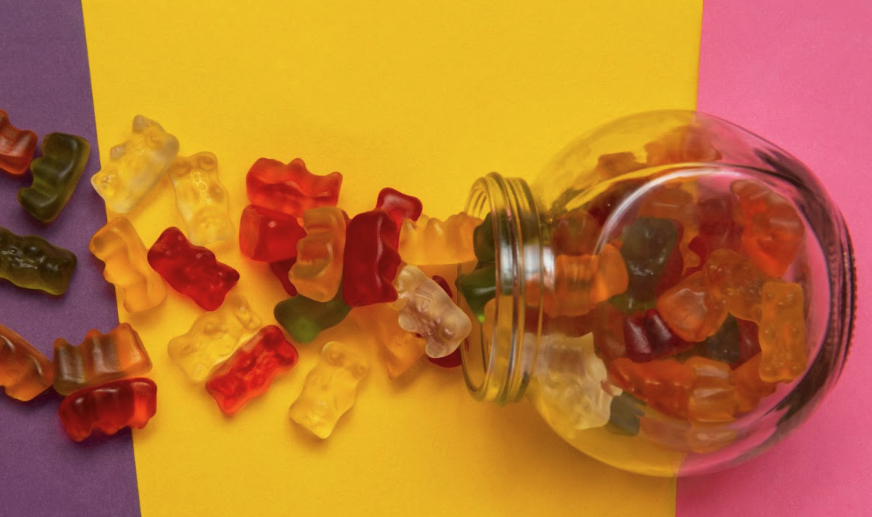Introduction
Freshness is everything with gummies. A gummy that turns sticky, dry, or misshapen loses appeal fast. Custom gummy packaging does the heavy lifting: it preserves texture, prevents contamination, and keeps flavor consistent so every bite tastes the way you intended. If you want repeat buyers, your packaging must protect the product, make it easy to store, and communicate how to use it. This article breaks down the practical choices that keep gummies fresh bite after bite.
Why freshness matters more than marketing
Here’s the thing: customers buy a sensory promise. They expect chew, flavor, and a reliable shelf life. If your gummy softens or clumps, that promise is broken and returns or complaints follow. Custom gummy packaging is your first line of defense against environmental factors that degrade the product.
Freshness affects more than taste. It affects perceived quality, brand trust, and reviews. When you invest in packaging that preserves texture and flavor, you protect the product experience and reduce wasted inventory.
Barrier performance is the technical core
Gummies are vulnerable to moisture and oxygen. Too much humidity makes them sticky. Too much oxygen can accelerate flavor loss. The right materials block both effectively. Multi-layer films, foil laminates, and high-barrier PET laminates are common choices because they limit water vapor transmission and oxygen ingress.
But barrier performance is not only about film. Seal integrity matters. A poor heat seal or low-quality zipper ruins barrier performance. Custom gummy packaging must be validated for both the material’s transmission rates and the actual seals used on your line.
Format choices that protect and sell
Different formats provide different practical benefits. Resealable stand-up pouches are a top choice for many gummy brands. They combine strong barrier films with a convenient zipper that customers use repeatedly. The resealability reduces air exposure after opening and helps maintain freshness.
Single-serve sachets work well for samples, portion control, and on-the-go use. They are sealed until use and limit openings that cause spoilage. For premium gummies, rigid jars or tubes can deliver both protection and a premium unboxing moment. The key is to match format with how customers use the product.
Small features that make a big difference
Include a tamper-evident seal so customers know the product reached them intact. Consider nitrogen flushing for oxygen-sensitive formulations. Add desiccant packs for formulations sensitive to humidity, but keep food safety and labeling in mind if you use them.
Labeling that clearly states storage instructions is underrated. A short line like Store in a cool dry place and Reseal after opening helps customers do the right thing. These small cues lengthen shelf life in real-world use.
Testing is non-negotiable
Lab specs are useful, but real-world tests tell the truth. Run accelerated shelf life tests and shipping simulations that include heat cycles and humidity swings. Verify how the package performs after repeated openings. Check for zipper fatigue, seal creep, and film delamination.
Testing reduces surprises. A package that looks great in a mockup can fail on the line or in transit. Validate before you scale.
Sustainability with performance in mind
Sustainable options exist, but they must protect the product. Mono-material films that are recyclable are improving and can offer reasonable barrier performance for many gummy types. PCR content reduces virgin plastic use but may affect clarity or finish. Compostable films are attractive for some markets, but they have real limitations when it comes to barrier reliability and end-of-life infrastructure.
If sustainability is a goal, run the same protection tests on greener materials and be honest with customers about disposal methods. Clear instructions keep your sustainability claim credible.
Operational realities and cost trade-offs
High-barrier films and premium closures cost more than basic films. But the cost of spoiled product, returns, and lost customers usually outweighs the raw material savings. Calculate total cost of ownership: packaging cost plus expected product loss plus returns. Often, better packaging wins that math.
Think about fill lines too. Some high-performance zippers or foil-lined pouches require specific machinery. Factor equipment compatibility and throughput into your decision.
Design and messaging that reinforce freshness
The package should communicate freshness cues at a glance. Use clean labeling, a prominent best-by date, and storage instructions. A small window can let customers see color and texture, but only if the window placement does not expose the product to light-sensitive degradation.
If you want to educate customers, include a QR code linking to storage tips or recipes. A little guidance reduces misuse and supports longer shelf life.
Conclusion
Custom gummy packaging is not decorative fluff. It is the functional backbone that keeps texture, flavor, and customer trust intact from production to the pantry. Choose the right barrier materials, validate seal integrity, match the format to how customers use the product, and test under real-world conditions. Factor sustainability in where practical, but don’t sacrifice protection for a label. When packaging preserves product quality consistently, customers will stick with your brand bite after bite.

